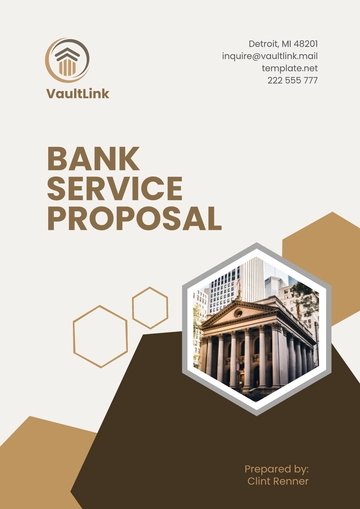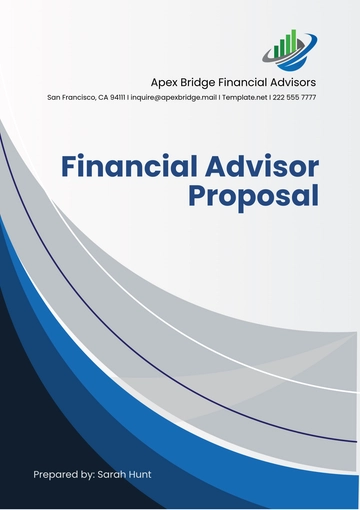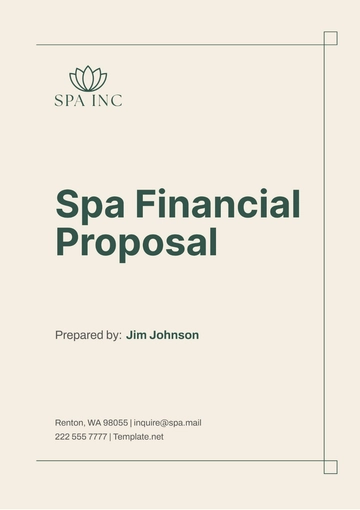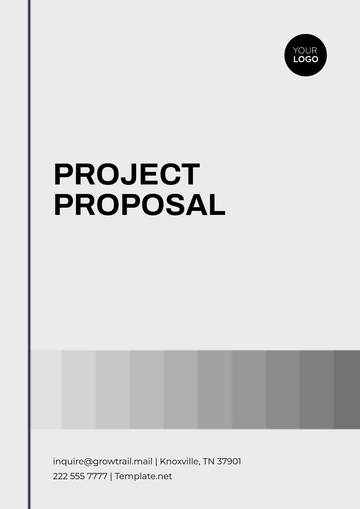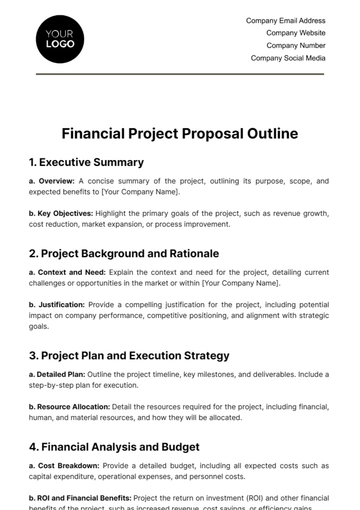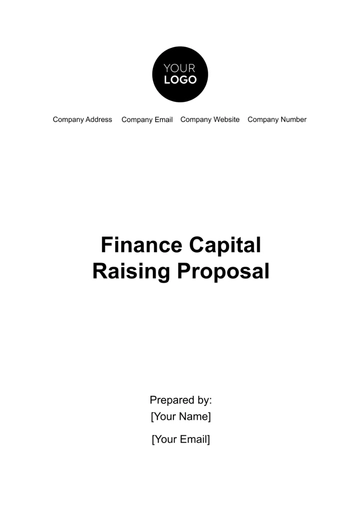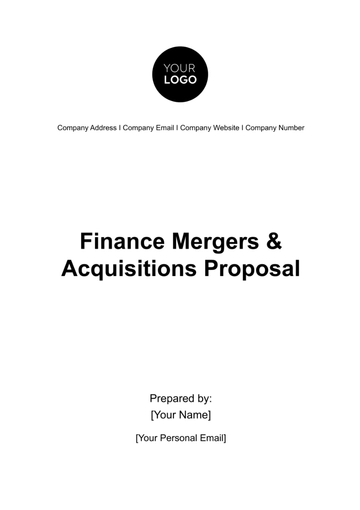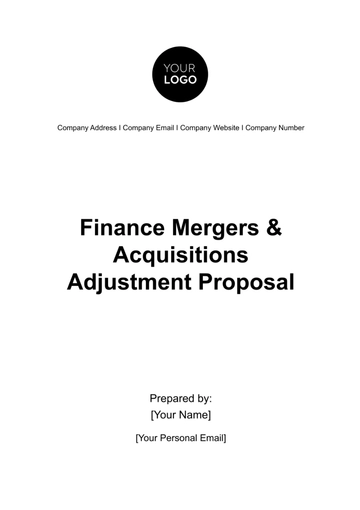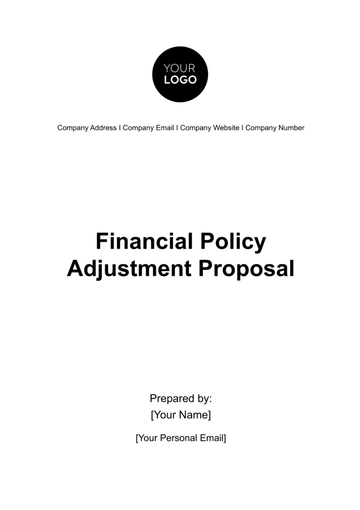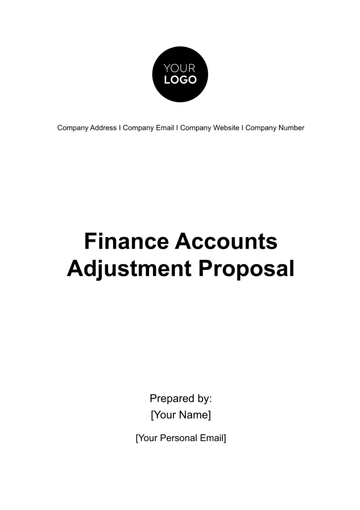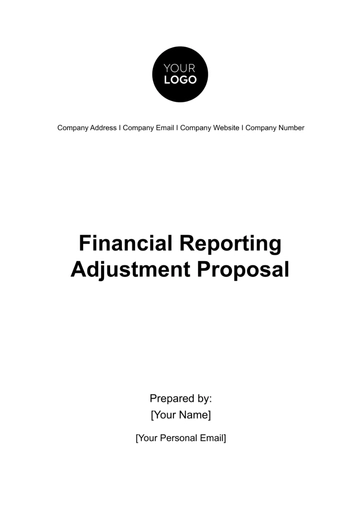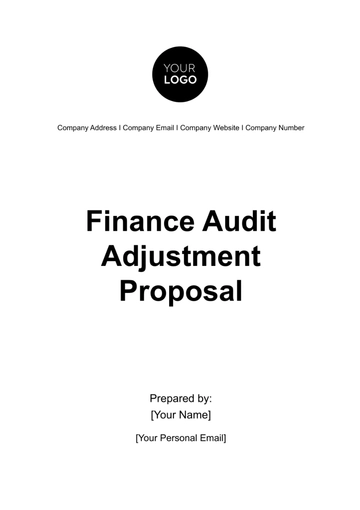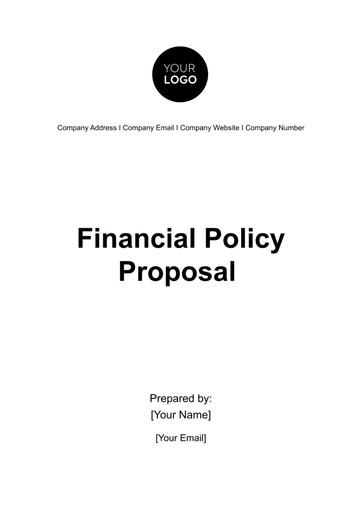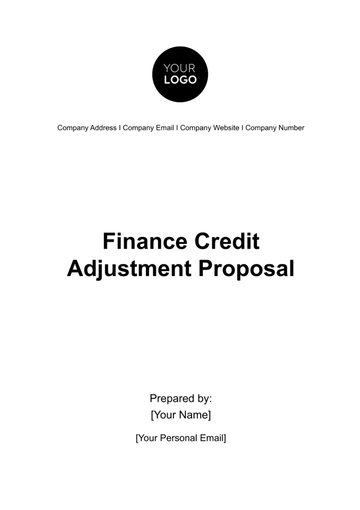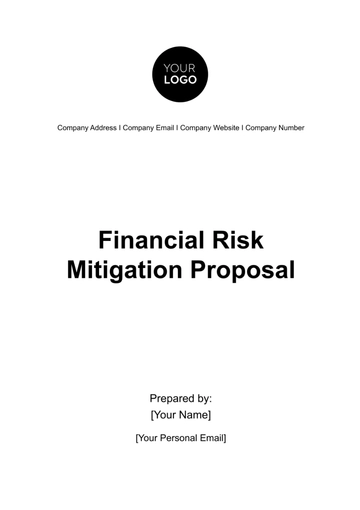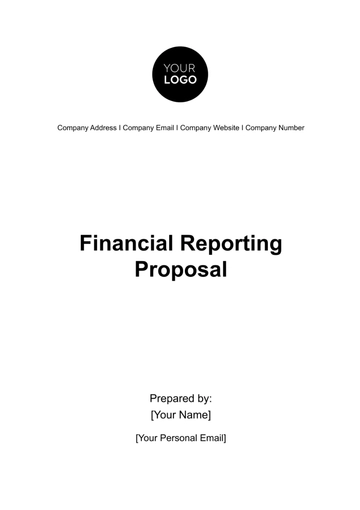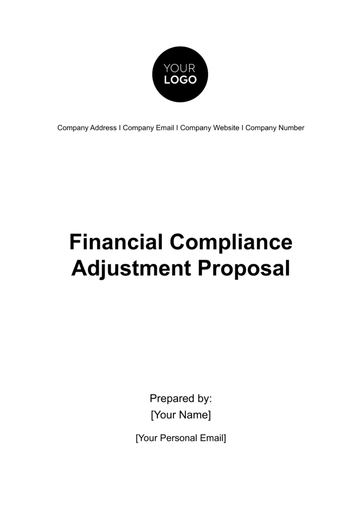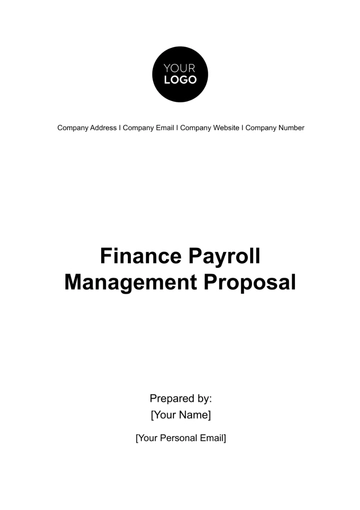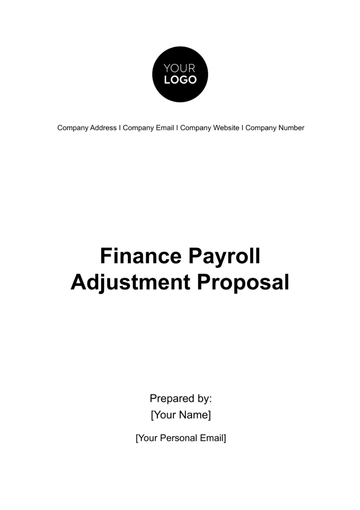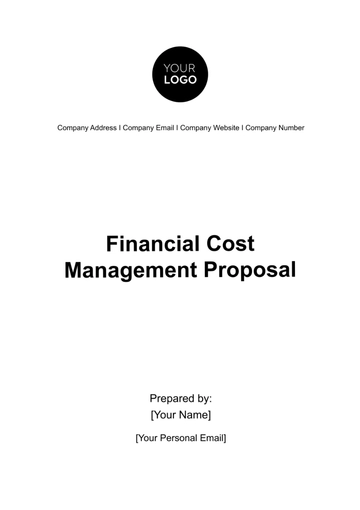Free Financial Compliance Adjustment Proposal
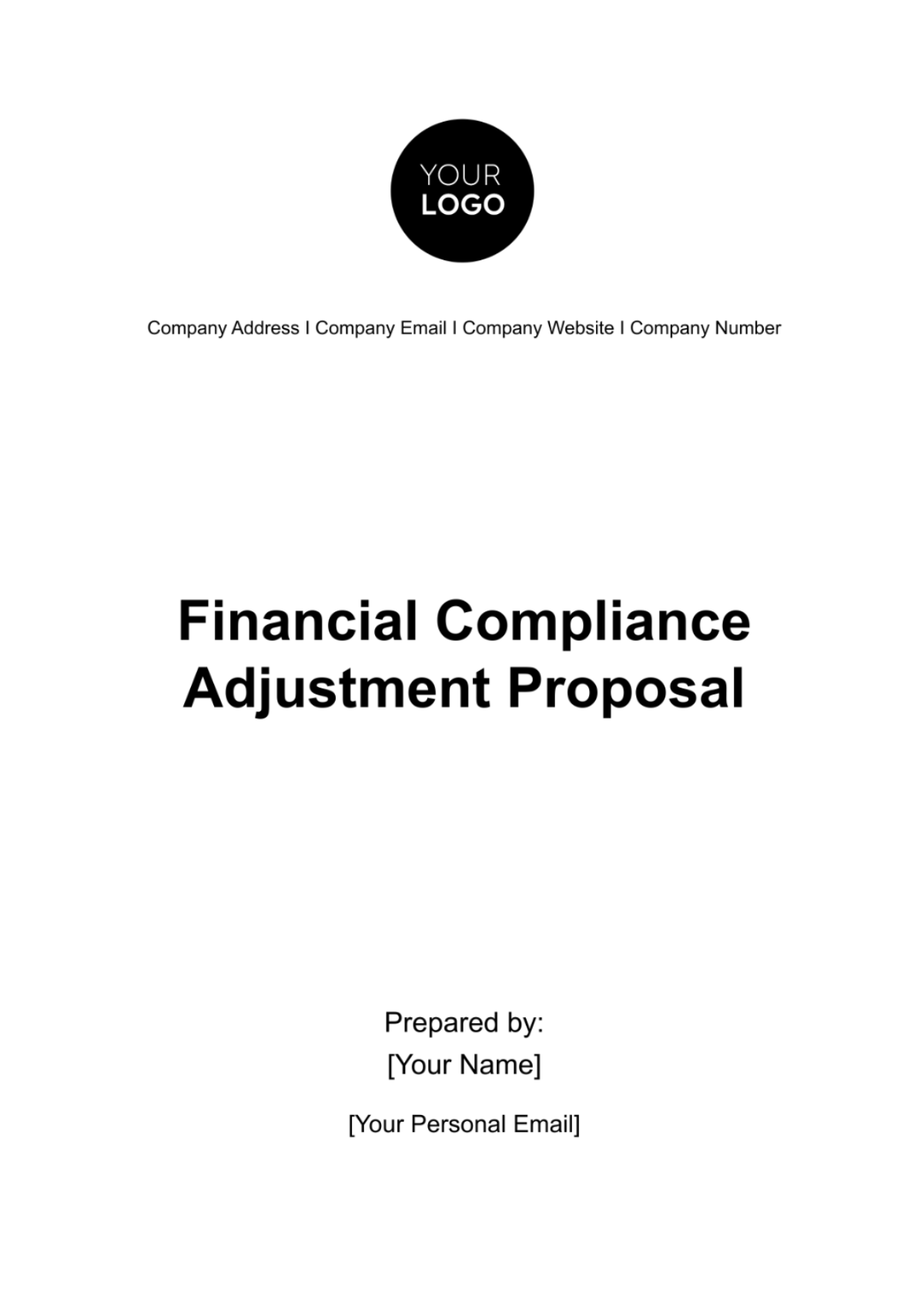
Executive Summary
A. Purpose
The purpose of this Financial Compliance Adjustment Proposal is to meticulously address and rectify identified non-compliance areas within [Your Company Name]. As part of our commitment to upholding the highest standards of financial integrity, this proposal outlines a strategic plan to align our operations with the latest regulatory requirements. By implementing these adjustments, [Your Company Name] aims not only to meet legal obligations but also to foster a culture of transparency and accountability.
B. Summary of Key Findings
A comprehensive assessment of our financial operations has revealed several critical findings that necessitate immediate attention. These findings include discrepancies in financial reporting, gaps in documentation processes, and potential non-compliance with recent regulatory updates. Addressing these issues is not only crucial for regulatory compliance but also essential for maintaining the trust and confidence of our stakeholders. Failure to act could result in reputational damage and financial repercussions for [Your Company Name].
Background and Context
A. Regulatory Framework
In the intricate landscape of financial services, [Your Company Name] operates within a multifaceted regulatory framework governed by entities such as Regulatory Authorities. Adhering to these regulations is not merely a legal obligation; it is a strategic imperative that reinforces our commitment to ethical business practices. The proposed adjustments outlined in this document aim to ensure that [Your Company Name] not only meets the minimum regulatory requirements but also exceeds them, positioning us as a leader in financial compliance within the industry.
B. Previous Compliance Initiatives
Over the past [10 years], [Your Company Name] has proactively undertaken various compliance initiatives to enhance our adherence to regulatory standards. While these initiatives have resulted in positive outcomes, the dynamic nature of financial regulations requires an ongoing commitment to review and fortify our compliance mechanisms. Insights gained from past initiatives, including successes and challenges faced, form the foundation for the proposed adjustments. By building upon these experiences, [Your Company Name] seeks to establish a more resilient and proactive approach to financial compliance.
Compliance Assessment
A. Methodology
Our compliance assessment employed a rigorous methodology to ensure a comprehensive review of [Your Company Name]'s financial operations. This involved conducting internal audits, engaging external compliance experts, and leveraging advanced compliance software. The assessment took place from [January 15, 2050], to [February 28, 2050], focusing on key areas, including but not limited to financial reporting, documentation processes, and adherence to specific regulatory updates.
B. Identified Non-Compliance Areas
The assessment revealed several non-compliance areas that require immediate attention:
Non-Compliance Area | Severity Level | Recommended Action |
|---|---|---|
Financial Reporting Discrepancies | High | Implement automated validation checks for accuracy |
Proposed Adjustments
A. Rationale for Adjustments
The proposed adjustments are rooted in addressing the identified non-compliance areas and are aligned with the overarching goal of enhancing [Your Company Name]'s financial integrity. The rationale for each adjustment is as follows:
Automated Validation Checks: To eliminate inaccuracies in financial reporting and ensure real-time detection of discrepancies.
Standardized Documentation Protocol: To mitigate documentation gaps and establish a consistent and auditable record-keeping process.
Dedicated Team for Regulatory Updates: To ensure timely compliance with regulatory changes, minimizing the risk of penalties and reputation damage.
B. Adjustment Strategies
The implementation of these adjustments will follow a structured plan:
Adjustment | Responsible Party | Timeline | Resources Required |
|---|---|---|---|
Automated Validation Checks | IT Department | [March 15, 2050 - May 31, 2050] | Compliance Software, Training for Staff |
Financial Impact Analysis
A. Cost of Adjustments
The estimated cost associated with implementing the proposed adjustments is [$500,000], which includes a breakdown as follows:
Compliance Software Acquisition: | [$200,000] |
Training Programs for IT Department and Compliance Team: | [$100,000] |
External Consultancy Fees: | [$150,000] |
Miscellaneous Expenses (Documentation Software, Additional Resources) | [$50,000] |
This investment reflects [Your Company Name]'s commitment to ensuring robust financial compliance measures. While this upfront cost may seem significant, it is imperative to recognize it as a strategic investment that safeguards the company's financial reputation and operational efficiency.
B. Return on Investment (ROI)
Anticipating the benefits from the proposed adjustments, [Your Company Name] foresees a substantial return on investment. The projected ROI of [$1,200,000] over the next two fiscal years takes into account:
Improved Accuracy in Financial Reporting: Reducing errors and discrepancies that may lead to financial losses.
Reduced Risk of Non-Compliance Penalties: Mitigating potential penalties resulting from regulatory violations.
Enhanced Operational Efficiency: Streamlining processes, reducing manual efforts, and optimizing resource utilization.
This financial analysis underscores the long-term financial sustainability and competitive advantage gained through proactive compliance measures.
Communication Plan
A. Internal Stakeholders
Effectively communicating the proposed adjustments to internal stakeholders is paramount for successful implementation. [Your Company Name] will adopt a multi-faceted approach:
Regular Briefings and Workshops: Conducted by the compliance team to educate staff on the adjustments.
Documentation and Guidelines: Providing comprehensive materials to ensure a clear understanding of new processes.
Company-wide Meetings and Newsletters: Sharing key milestones and progress updates regularly.
This internal communication strategy aims to foster a sense of collective responsibility and engagement among all employees.
B. External Stakeholders
Maintaining transparency and trust with external stakeholders is equally crucial. [Your Company Name] will implement the following communication strategies:
Press Releases: Announcing the adjustments and highlighting their significance in the industry.
Dedicated Emails to Clients: Detailing the changes, their benefits, and how they contribute to improved service.
Social Media Updates: Regularly communicating progress on official channels to assure clients, partners, and the public of [Your Company Name]'s commitment to financial integrity.
Implementation Timeline
The successful implementation of the proposed adjustments requires a carefully crafted timeline to ensure efficiency and minimal disruption to [Your Company Name]'s operations.
Phase | Key Milestones | Timeline | Responsible Parties |
|---|---|---|---|
Pre-Implementation Preparation | Risk Assessment, Team Training | [June 1, 2050 - June 15, 2050] | Compliance Team, IT Department |
Monitoring and Reporting
A. Key Performance Indicators (KPIs)
To measure the effectiveness of the implemented adjustments, [Your Company Name] will track the following key performance indicators:
Accuracy Rate in Financial Reporting: Targeting a [95%] improvement within the first quarter.
Adherence to Regulatory Updates: Ensuring real-time compliance, with a goal of [100%].
Documentation Completion Rate: Aiming for [90%] completion within established timelines.
B. Reporting Frequency
Regular reports will be generated and distributed as follows:
Monthly Progress Reports: Shared internally with department heads.
Quarterly Compliance Assessments: Distributed to the executive team and relevant stakeholders.
Annual Comprehensive Compliance Report: Submitted to regulatory bodies.
Employee Training and Skill Development
Recognizing the critical role of a skilled workforce in maintaining financial compliance, [Your Company Name] will implement ongoing training and skill development programs. This section outlines:
Training Needs Assessment: Identifying areas where additional training is required.
Continuous Learning Initiatives: Providing opportunities for staff to stay updated on regulatory changes.
Skills Enhancement Programs: Offering courses to enhance the skills necessary for effective compliance management.
Stakeholder Engagement Strategy
To ensure a collaborative and transparent approach, [Your Company Name] will develop a Stakeholder Engagement Strategy. This section includes:
Identification of Stakeholders: Listing key internal and external stakeholders relevant to the compliance adjustments.
Communication Channels: Outlining the channels through which stakeholders will be informed and engaged.
Feedback Mechanisms: Establishing methods for collecting feedback and addressing concerns.
Periodic Stakeholder Updates: Scheduled communication to keep stakeholders informed about the progress of the adjustments.
Contingency Plan
In the event of unforeseen challenges during the implementation of the proposed adjustments, [Your Company Name] has developed a comprehensive contingency plan. This plan includes:
Rapid Response Team Activation: Promptly addressing and mitigating challenges.
Communication Protocols: Ensuring transparent and timely updates to internal and external stakeholders.
Review and Adaptation: Regularly assessing the effectiveness of the contingency plan and making necessary adjustments.
Approval and Sign-off
A. Approval Process
The approval process involves a multi-stage review by key stakeholders:
Initial Review by the Compliance Team
Evaluation by the Executive Committee
Final Approval by the Board of Directors
B. Sign-off
Authorized individuals, including [Your Name] and other designated signatories, will formally sign off on the proposed adjustments, indicating their agreement and commitment to the implementation plan.
- 100% Customizable, free editor
- Access 1 Million+ Templates, photo’s & graphics
- Download or share as a template
- Click and replace photos, graphics, text, backgrounds
- Resize, crop, AI write & more
- Access advanced editor
Navigate financial compliance adjustments seamlessly with the Financial Compliance Adjustment Proposal Template from Template.net. This editable and customizable proposal simplifies the adjustment process. Tailor content effortlessly using our Ai Editor Tool, ensuring adaptability and precision. Elevate your financial proposals with this user-friendly template, offering a streamlined approach to effective compliance adjustment strategies.
You may also like
- Business Proposal
- Research Proposal
- Proposal Request
- Project Proposal
- Grant Proposal
- Photography Proposal
- Job Proposal
- Budget Proposal
- Marketing Proposal
- Branding Proposal
- Advertising Proposal
- Sales Proposal
- Startup Proposal
- Event Proposal
- Creative Proposal
- Restaurant Proposal
- Blank Proposal
- One Page Proposal
- Proposal Report
- IT Proposal
- Non Profit Proposal
- Training Proposal
- Construction Proposal
- School Proposal
- Cleaning Proposal
- Contract Proposal
- HR Proposal
- Travel Agency Proposal
- Small Business Proposal
- Investment Proposal
- Bid Proposal
- Retail Business Proposal
- Sponsorship Proposal
- Academic Proposal
- Partnership Proposal
- Work Proposal
- Agency Proposal
- University Proposal
- Accounting Proposal
- Real Estate Proposal
- Hotel Proposal
- Product Proposal
- Advertising Agency Proposal
- Development Proposal
- Loan Proposal
- Website Proposal
- Nursing Home Proposal
- Financial Proposal
- Salon Proposal
- Freelancer Proposal
- Funding Proposal
- Work from Home Proposal
- Company Proposal
- Consulting Proposal
- Educational Proposal
- Construction Bid Proposal
- Interior Design Proposal
- New Product Proposal
- Sports Proposal
- Corporate Proposal
- Food Proposal
- Property Proposal
- Maintenance Proposal
- Purchase Proposal
- Rental Proposal
- Recruitment Proposal
- Social Media Proposal
- Travel Proposal
- Trip Proposal
- Software Proposal
- Conference Proposal
- Graphic Design Proposal
- Law Firm Proposal
- Medical Proposal
- Music Proposal
- Pricing Proposal
- SEO Proposal
- Strategy Proposal
- Technical Proposal
- Coaching Proposal
- Ecommerce Proposal
- Fundraising Proposal
- Landscaping Proposal
- Charity Proposal
- Contractor Proposal
- Exhibition Proposal
- Art Proposal
- Mobile Proposal
- Equipment Proposal
- Student Proposal
- Engineering Proposal
- Business Proposal

